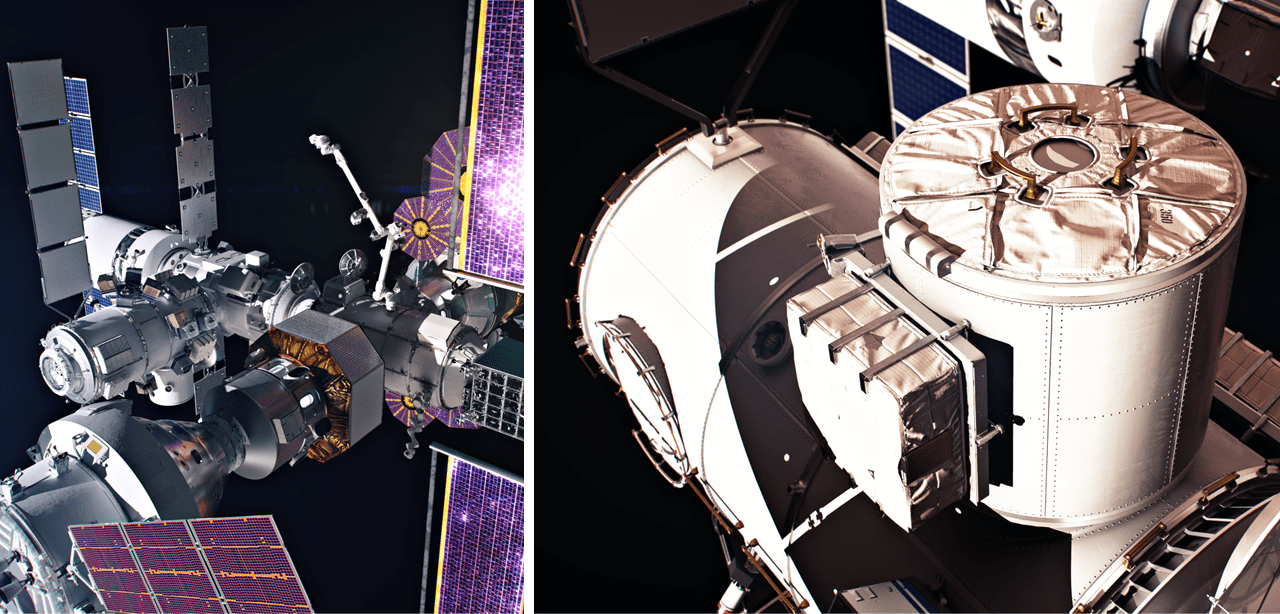
NASA and the Mohammed bin Rashid Space Centre (MBRSC) of the United Arab Emirates (UAE) announced Sunday plans for the space centre to provide an airlock for Gateway, humanity’s first space station that will orbit the Moon. The lunar space station will support NASA’s missions for long-term exploration of the Moon under Artemis for the benefit of all.
“As chair of the National Space Council, I have made it a priority to enhance international cooperation in space. Today’s announcement and partnership between the United States and United Arab Emirates advances this important work. By combining our resources, scientific capacity, and technical skill, the U.S. and UAE will further our collective vision for space and ensure it presents extraordinary opportunities for everyone here on Earth,” said Vice President Kamala Harris.
Under a new implementing arrangement expanding their human spaceflight collaboration with NASA through Gateway, MBRSC will provide Gateway’s Crew and Science Airlock module, as well as a UAE astronaut to fly to the lunar space station on a future Artemis mission.
“The United States and the United Arab Emirates are marking a historic moment in our nations’ collaboration in space, and the future of human space exploration,” said NASA Administrator Bill Nelson. “We are in a new era of exploration through Artemis – strengthened by the peaceful and international exploration of space. The UAE’s provision of the airlock to Gateway will allow astronauts to conduct groundbreaking science in deep space and prepare to one day send humanity to Mars.”
In addition to operating the airlock, MBRSC also will provide engineering support for the life of the lunar space station. The airlock will allow crew and science research transfers to and from the habitable environment of Gateway’s pressurized crew modules to the vacuum of space. These transfers will support broader science in the deep space environment, as well as Gateway maintenance.
Gateway will support sustained exploration and research in deep space, provide a home for astronauts to live and work, including a staging point for lunar surface missions, and an opportunity to conduct spacewalks while orbiting the Moon.
NASA’s Artemis program is the most diverse and broad coalition of nations in human exploration in deep space. In collaboration with the CSA (Canadian Space Agency), ESA (European Space Agency), JAXA (Japan Aerospace Exploration Agency), and now the MBRSC, NASA will return humans to the lunar surface for scientific discovery and chart a path for the first human missions to Mars.
This latest cooperation on Gateway builds on NASA’s and UAE’s previous human spaceflight collaboration. In 2019, Hazzaa Almansoori became the first Emirati to fly to space during a short mission to the International Space Station, in which he collaborated with NASA to perform experiments and educational outreach. A second Emirati astronaut, Sultan Al Neyadi, launched to the space station in 2023 on NASA’s SpaceX Crew-6 mission, where he participated in the floating laboratory’s scientific research that advances human knowledge and improves life on Earth. The UAE currently has two additional astronaut candidates in training at NASA’s Johnson Space Center in Houston. NASA has also worked with UAE on Mars research and human research and analog studies to support mutual exploration priorities.
In 2020, the United States and UAE were among the original signers of the Artemis Accords, which are a practical set of principles to guide space exploration cooperation among nations participating in NASA’s 21st century lunar exploration program.
Through Artemis, NASA will land the first woman and the first person of color on the surface of the Moon, paving the way for a long-term lunar presence and serving as a steppingstone to send the first astronauts to Mars.
-end-
Vanessa Lloyd / Kathryn Hambleton
Headquarters, Washington
202-358-1600
vanessa.c.lloyd@nasa.gov / kathryn.hambleton@nasa.gov
Dylan Connell
Johnson Space Center, Houston
281-483-5111
dylan.b.connell@nasa.gov
from NASA https://ift.tt/d1q6guL
